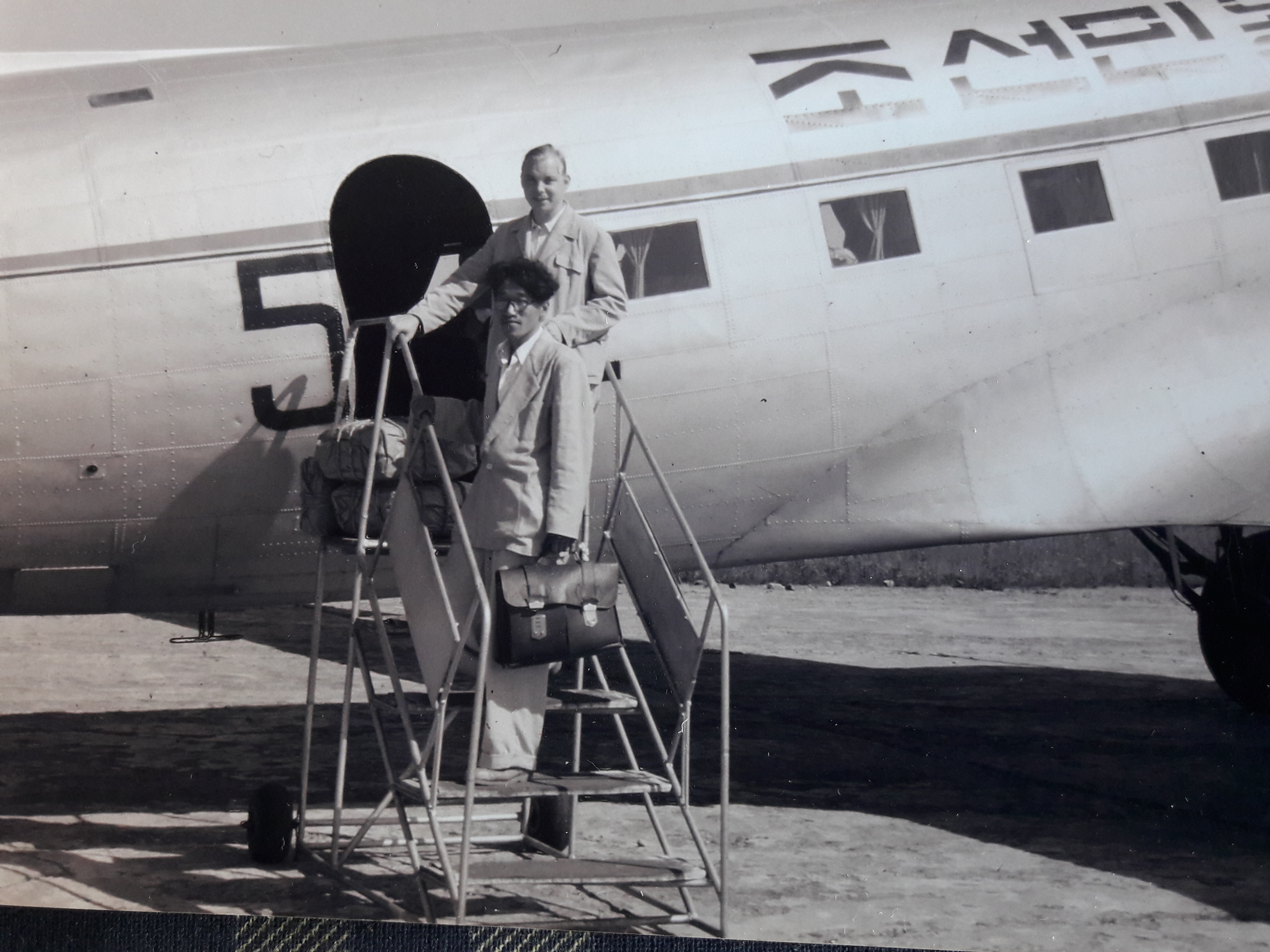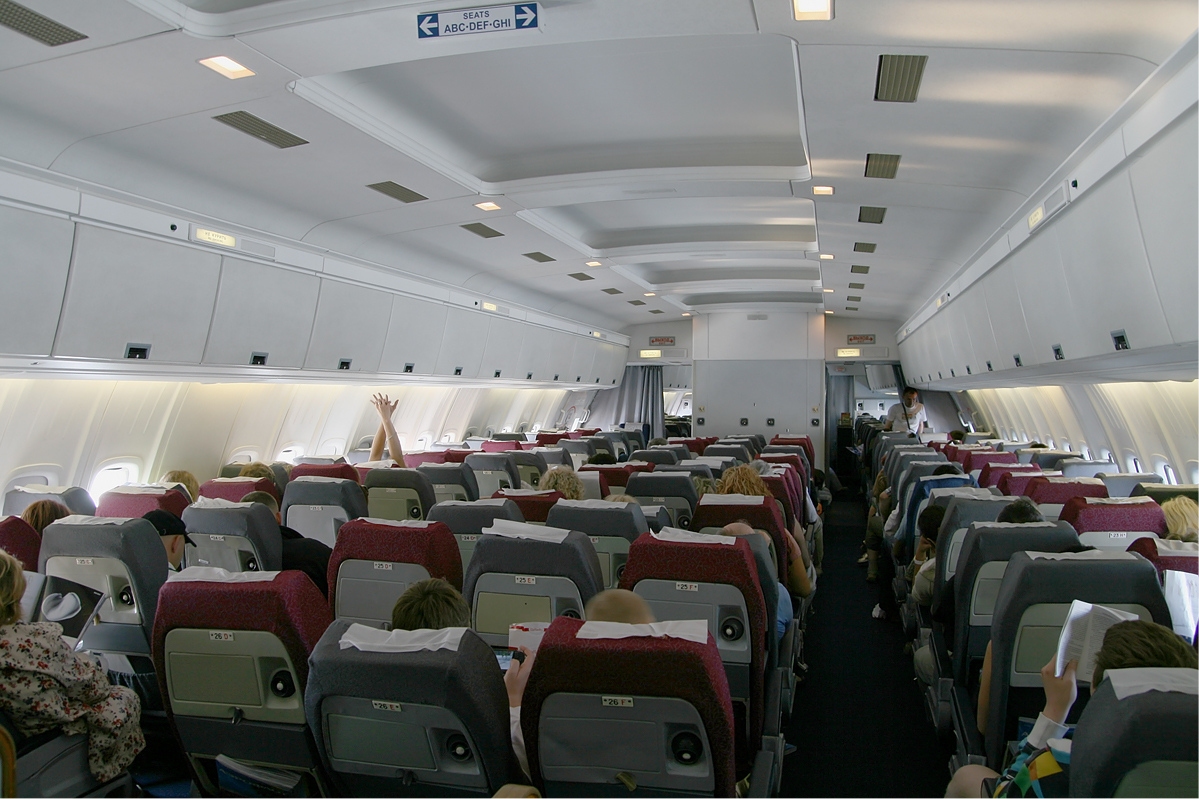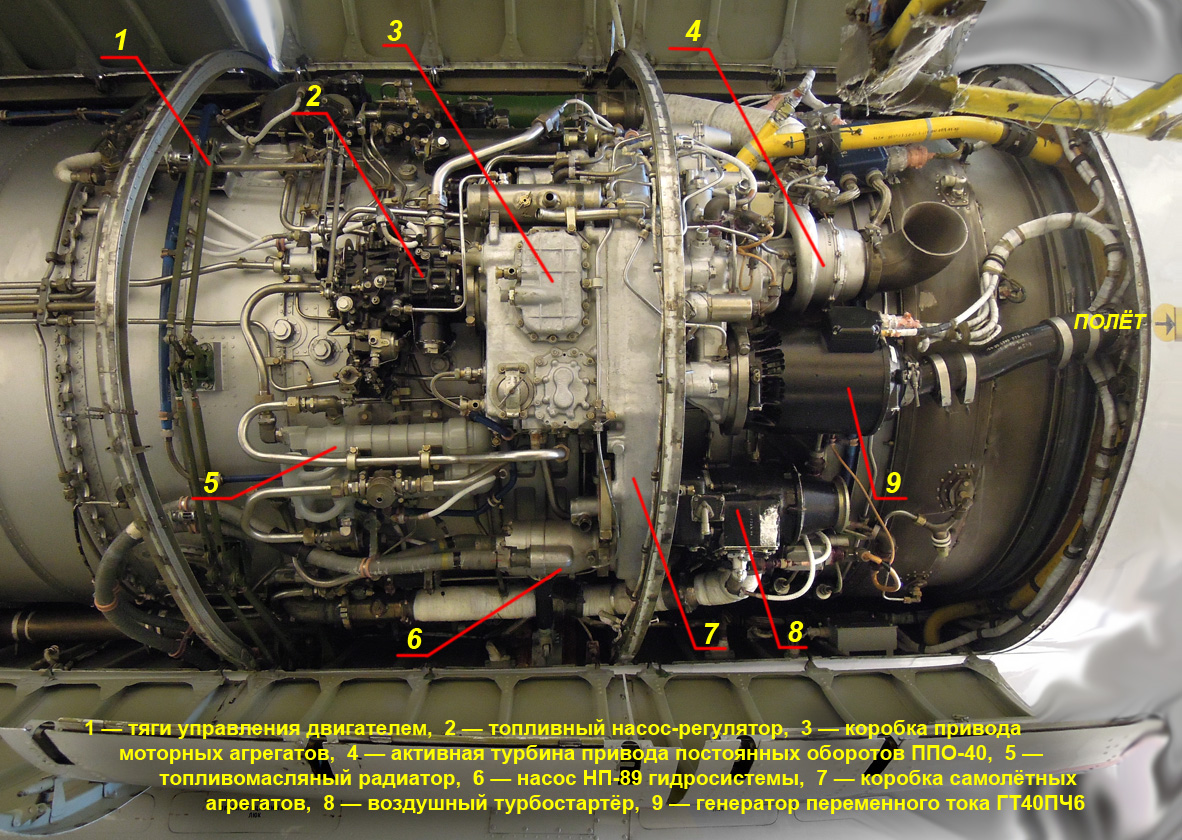|
IL-62
The Ilyushin Il-62 (russian: Илью́шин Ил-62; NATO reporting name: Classic) is a Soviet long-range narrow-body jetliner conceived in 1960 by Ilyushin. As successor to the popular turboprop Il-18 and with capacity for almost 200 passengers and crew, the Il-62 was the world's largest jet airliner when first flown in 1963. One of four pioneering long-range designs (the others being Boeing 707, Douglas DC-8, and Vickers VC10), it was the first such type to be operated by the Soviet Union and a number of allied nations. The Il-62 entered Aeroflot civilian service on 15 September 1967 with an inaugural passenger flight from Moscow to Montreal, and remained the standard long-range airliner for the Soviet Union (and later, Russia) for several decades. It was the first Soviet pressurised aircraft with non-circular cross-section fuselage and ergonomic passenger doors, and the first Soviet jet with six-abreast seating (the turboprop Tu-114 shared this arrangement) and inter ... [...More Info...] [...Related Items...] OR: [Wikipedia] [Google] [Baidu] |
LOT Polish Airlines
LOT Polish Airlines, legally incorporated as Polskie Linie Lotnicze LOT S.A. (corporation), S.A. (, ''flight''), is the flag carrier of Poland. Established in 1928, LOT was a founding member of IATA and remains one of List of airlines by foundation date, the world's oldest airlines in operation. With a fleet of 75 aircraft as of 2021, LOT Polish Airlines is the 18th largest operator in Europe with over 120 destinations across Europe, Asia and North America. The airline was founded on 29 December 1928 by the Polish government during the Second Polish Republic as a self-governing limited liability corporation, taking over existing domestic airlines Aerolot (founded in 1922) and Aero (Polish airline), Aero (founded in 1925), and began operations on 1 January 1929. The first aircraft used by LOT were Junkers F.13 and Fokker F.VII with the inaugural international service to Vienna, Austria, beginning on 2 August 1929. Most of the destinations originate from its airline hub, hub at Wa ... [...More Info...] [...Related Items...] OR: [Wikipedia] [Google] [Baidu] |
Air Koryo
Air Koryo () is the state-owned national airline of North Korea, headquartered in Sunan-guyŏk, Pyongyang. Based at Pyongyang International Airport (IATA: FNJ), it operates international scheduled and charter services to points in Asia. History Early years In early 1950, SOKAO (Soviet–Korean Airline), ) was established as a joint North Korean-Soviet venture to connect Pyongyang with Moscow. Regular flights began that same year. Services were suspended during the Korean War, resuming in 1953 as Bureau of Civil Aviation Ministry of Transport of DPRK The state airline was then placed under the control of the Civil Aviation Administration of Korea (CAAK), starting operations on 21 September 1955 with Lisunov Li-2, Antonov An-2 and Ilyushin Il-12 aircraft. Ilyushin Il-14s and Ilyushin Il-18s were added to the fleet in the 1960s. Jet operations commenced in 1975 when the first Tupolev Tu-154 was delivered for service from Pyongyang to Prague, East Berlin and Moscow. Because the ... [...More Info...] [...Related Items...] OR: [Wikipedia] [Google] [Baidu] |
Il-86
The Ilyushin Il-86 (russian: Илью́шин Ил-86; NATO reporting name: Camber) is a short- to medium- range wide-body jet airliner that served as the USSR's first wide-bodied aircraft. Designed and tested by the Ilyushin design bureau in the 1970s, it was certified by the Soviet aircraft industry, manufactured and marketed by the USSR. Developed during the rule of Leonid Brezhnev, the Il-86 was marked by the economic and technological stagnation of the era: it used engines more typical of the late 1960s, spent a decade in development, and failed to enter service in time for the Moscow Olympics, as was originally intended. The type was used by Aeroflot and successor post-Soviet airlines and only three of the total 106 constructed were exported. At the beginning of 2012, only four Il-86s remained in service, all with the Russian Air Force. By the end of 2020 the number in active service was reduced to three. Development Background In the mid-1960s, the United State ... [...More Info...] [...Related Items...] OR: [Wikipedia] [Google] [Baidu] |
Tupolev Tu-114
The Tupolev Tu-114 Rossiya ( ru , link=no, Tyполев Тy-114 Poccия; NATO reporting name Cleat) was a turboprop-powered long-range airliner designed by the Tupolev design bureau and built in the Soviet Union from May 1955. The aircraft was the largest and fastest passenger plane at that time and also had the longest range, at 10,900 km (6,800 mi). It has held the official title of fastest propeller-driven aircraft since 1960."FAI official database" '' Fédération Aéronautique Internationale''. Retrieved: 5 September 2007. Due to its swept wing and powerplant design, the Tu-114 was able to travel at speeds t ... [...More Info...] [...Related Items...] OR: [Wikipedia] [Google] [Baidu] |
Vickers VC10
The Vickers VC10 is a mid-sized, narrow-body long-range British jet airliner designed and built by Vickers-Armstrongs (Aircraft) Ltd and first flown at Brooklands, Surrey, in 1962. The airliner was designed to operate on long-distance routes from the shorter runways of the era and commanded excellent hot and high performance for operations from African airports. The performance of the VC10 was such that it achieved the fastest crossing of the Atlantic by a subsonic jet airliner of 5 hours and 1 minute, a record that was held for 41 years, until February 2020 when a British Airways Boeing 747 broke the record at 4 hours 56 minutes due to Storm Ciara. Only the supersonic Concorde was faster. The VC10 is often compared to the larger Soviet Ilyushin Il-62, the two types being the only airliners to use a rear-engined quad layout. The smaller business jet Lockheed JetStar also has this engine arrangement. Although only a relatively small number of VC10s were built, they prov ... [...More Info...] [...Related Items...] OR: [Wikipedia] [Google] [Baidu] |
Jet Airliner
A jet airliner or jetliner is an airliner powered by jet engines (passenger jet aircraft). Airliners usually have two or four jet engines; three-engined designs were popular in the 1970s but are less common today. Airliners are commonly classified as either the large wide-body aircraft, medium narrow-body aircraft and smaller regional jet. Most airliners today are powered by jet engines, because they are capable of safely operating at high speeds and generate sufficient thrust to power large-capacity aircraft. The first jetliners, introduced in the 1950s, used the simpler turbojet engine; these were quickly supplanted by designs using turbofans, which are quieter and more fuel-efficient. History Early history The first airliners with turbojet propulsion were experimental conversions of the Avro Lancastrian piston-engined airliner, which were flown with several types of early jet engine, including the de Havilland Ghost and the Rolls-Royce Nene. They retained the two ... [...More Info...] [...Related Items...] OR: [Wikipedia] [Google] [Baidu] |
Kuznetsov NK-8
The NK-8 was a low-bypass turbofan engine built by the Kuznetsov Design Bureau, in the thrust class. It powered production models of the Ilyushin Il-62 and the Tupolev Tu-154A and B models. Variants ;NK-8-2: (Tupolev Tu-154) ;NK-8-2U: (Tupolev Tu-154) ;NK-8-4: (Ilyushin Il-62) Applications *Ilyushin Il-62 *Tupolev Tu-154 The Tupolev Tu-154 (russian: Tyполев Ту-154; NATO reporting name: "Careless") is a three-engined, medium-range, narrow-body airliner designed in the mid-1960s and manufactured by Tupolev. A workhorse of Soviet and (subsequently) Rus ... Specifications (NK-8-2) See also References External links NK-8 on LeteckeMotory.cz- NK-8 (cs) {{Kuznetsov aeroengines Low-bypass turbofan engines 1960s turbofan engines Kuznetsov aircraft engines ... [...More Info...] [...Related Items...] OR: [Wikipedia] [Google] [Baidu] |
Jetliner
A jet airliner or jetliner is an airliner powered by jet engines (passenger jet aircraft). Airliners usually have two or four jet engines; three-engined designs were popular in the 1970s but are less common today. Airliners are commonly classified as either the large wide-body aircraft, medium narrow-body aircraft and smaller regional jet. Most airliners today are powered by jet engines, because they are capable of safely operating at high speeds and generate sufficient thrust to power large-capacity aircraft. The first jetliners, introduced in the 1950s, used the simpler turbojet engine; these were quickly supplanted by designs using turbofans, which are quieter and more fuel-efficient. History Early history The first airliners with turbojet propulsion were experimental conversions of the Avro Lancastrian piston-engined airliner, which were flown with several types of early jet engine, including the de Havilland Ghost and the Rolls-Royce Nene. They retained the two inboa ... [...More Info...] [...Related Items...] OR: [Wikipedia] [Google] [Baidu] |
Kuznetsov Design Bureau
The Kuznetsov Design Bureau (russian: СНТК им. Н. Д. Кузнецова, also known as OKB-276) was a Russian design bureau for aircraft engines, administrated in Soviet times by Nikolai Dmitriyevich Kuznetsov. It was also known as (G)NPO Trud (or NPO Kuznetsov) and Kuybyshev Engine Design Bureau (KKBM). NPO Trud was replaced in 1994 by a Joint Stock Company (JSC), Kuznetsov R & E C. By the early 2000s the lack of funding caused by the poor economic situation in Russia had brought Kuznetsov on the verge of bankruptcy. In 2009 the Russian government decided to consolidate a number of engine-making companies in the Samara region under a new legal entity. This was named JSC Kuznetsov, after the design bureau. Products The Kuznetzov Bureau first became notable for producing the monstrous Kuznetsov NK-12 turboprop engine that powered the Tupolev Tu-95 bomber beginning in 1952 as a development of the Junkers 0022 engine. The new engine eventually generated about 15,000 ho ... [...More Info...] [...Related Items...] OR: [Wikipedia] [Google] [Baidu] |
Narrow-body Aircraft
A narrow-body aircraft or single-aisle aircraft is an airliner arranged along a single aisle, permitting up to 6-abreast seating in a cabin less than in width. In contrast, a wide-body aircraft is a larger airliner usually configured with multiple aisles and a fuselage diameter of more than , allowing at least seven-abreast seating and often more travel classes. Market Historically, beginning in the late 1960s and continuing through the 1990s, twin engine narrow-body aircraft, such as the Boeing 737 Classic, McDonnell-Douglas MD-80 and Airbus A320 were primarily employed in short to medium-haul markets requiring neither the range nor the passenger-carrying capacity of that period's wide-body aircraft. The re-engined B737 MAX and A320neo jets offer 500 miles more range, allowing them to operate the 3,000 miles transatlantic flights between the eastern U.S. and Western Europe, previously dominated by wide-body aircraft. Norwegian Air Shuttle, JetBlue Airways and TAP ... [...More Info...] [...Related Items...] OR: [Wikipedia] [Google] [Baidu] |
Turbofan
The turbofan or fanjet is a type of airbreathing jet engine that is widely used in aircraft propulsion. The word "turbofan" is a portmanteau of "turbine" and "fan": the ''turbo'' portion refers to a gas turbine engine which achieves mechanical energy from combustion, and the ''fan'', a ducted fan that uses the mechanical energy from the gas turbine to force air rearwards. Thus, whereas all the air taken in by a turbojet passes through the combustion chamber and turbines, in a turbofan some of that air bypasses these components. A turbofan thus can be thought of as a turbojet being used to drive a ducted fan, with both of these contributing to the thrust. The ratio of the mass-flow of air bypassing the engine core to the mass-flow of air passing through the core is referred to as the bypass ratio. The engine produces thrust through a combination of these two portions working together; engines that use more jet thrust relative to fan thrust are known as ''low-bypass turbofans'', ... [...More Info...] [...Related Items...] OR: [Wikipedia] [Google] [Baidu] |
Aeroflot
PJSC AeroflotRussian Airlines (russian: ПАО "Аэрофло́т — Росси́йские авиали́нии", ), commonly known as Aeroflot ( or ; russian: Аэрофлот, , ), is the flag carrier and the largest airline of Russia. The airline was founded in 1923, making Aeroflot one of the oldest active airlines in the world. Aeroflot is headquartered in the Central Administrative Okrug, Moscow, with its hub being Sheremetyevo International Airport. Before the 2022 Russian invasion of Ukraine, the airline flew to 146 destinations in 52 countries, excluding codeshared services. The number of destinations was significantly reduced after many countries banned Russian aircraft; as of 8 March 2022, Aeroflot flies only to destinations in Russia and Belarus. From its inception to the early 1990s, Aeroflot was the flag carrier and a state-owned enterprise of the Soviet Union (USSR). During this time, Aeroflot grew its fleet to over five thousand domestically made aircr ... [...More Info...] [...Related Items...] OR: [Wikipedia] [Google] [Baidu] |










